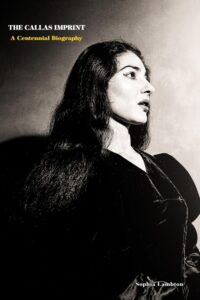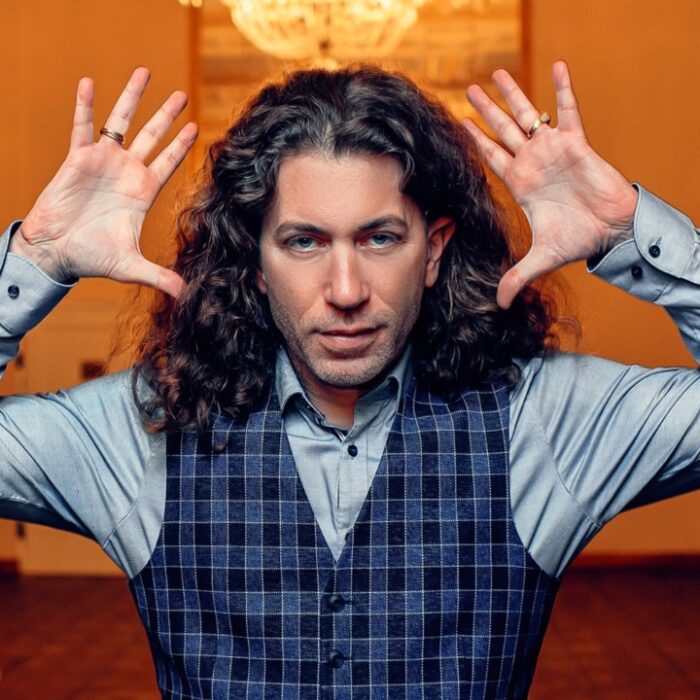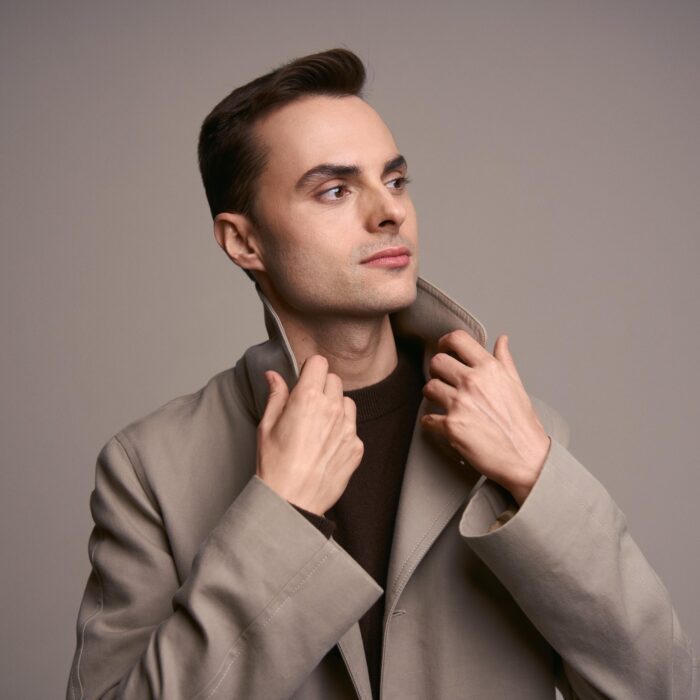
Q & A: Author & Music Critic Sophia Lambton on the 12-Year Journey of Writing ‘The Callas Imprint’
By David SalazarSince the age of 17, Sophia Lambton has engaged in a full-fledged career as a writer. The writer of the novel, “The Crooked Little Pieces,” she has been published as a music critic with her work appearing in such publications as Musical Opinion, The Guardian, Bachtrack, musicOMH, BroadwayWorld, BBC Music Magazine, and OperaWire.
While embarking on numerous projects during that time, one in particular has been at the forefront of her mind – a unique exploration of the work of Maria Callas. “The Callas Imprint,” which was released on Dec. 2, 2023, on the centennial of Callas’ birthday, represents the culmination of a 12-year journey for Lambton.
OperaWire recently spoke to the author about who Callas is to her and the experience of completing “The Callas Imprint.”
OperaWire: What does Maria Callas mean to you? How has she inspired you? What was your first encounter with her art?
Sophia Lambton: From an artistic standpoint, she is the consummate onstage creator. I use the term “creator” because most actors and singers are interpreters: they lend a text or score a string of lilts or cadences or accents; gestures or motifs. Through listening to Callas I began to realize that the best performers have imaginations of a great enough capacity to paint a character anew. That maybe Verdi wouldn’t have expected Violetta to be sung a certain way—but not because that variant would have appeared incongruous; rather the contrary—Verdi did not possess the scope of a great actor’s scenic gifts. In a comparable way I’ve heard Rachmaninov play his own works and believed Horowitz’s renderings to be superior.
My father gave me my first Callas recording when I was 13: “Carmen.” It’s actually an opera I don’t like, and yet back then I was obsessed… with Leontyne Price’s rendition. I had the reaction of many which Callas herself discussed: the shock at that strange creature of the voice. It took a little while for me to get acclimatized, but thankfully not long.
A panorama was her art: the virtues of obsessive observational absorbance. When you hear Cio-Cio-san, the curvatures of Callas’ accents make her a teen geisha. When you hear Carmen, the burlesque-like burliness of those below-C mezzo notes make her a maneater. Vocal manipulation is aplenty through her executions; dangerous at times because it twists a natural and yet fluctuating timbre. As an adorer of the scenic arts who’s seen her share of films, tv and theatre, I genuinely don’t believe she has a character-constructing parallel.
On a personal level, I learnt from Callas to be strong in fighting for my own tastes. Her contribution to the world of opera didn’t just span cuts and cabalettas; she would impact choices around stage design and costumes; casting and make-up. She argued with conductors about pace and encores; had the guts to say out loud that she believed both “Vissi d’arte” and “Casta diva” were redundant works in their respective operas (not that she ever quite possessed the guts to have the maestri toss them out entirely… though that would’ve been interesting).
When she first began to interest me significantly I was stunned at how relatable she seemed. She made me see mankind’s universality. There are going to be a lot of readers of this book who won’t get some of her decisions; may not understand the contradictions she presents. Yet when we see or hear or read an artist’s work it is the instinct that reacts. People have spent a long time trying to figure out what did and didn’t happen in her life. The tome has answers to these questions but the crux of its creation is allowing readers to identify with this astonishingly gifted rarity.
I believe art lets us share the souls of all creators—even those we write off as being evil, mad or morally inferior (though Callas was none of those things). It’s about love and loss and sacrifice; mind-numbingly hard work and fate’s sick twists and turns because everything is.
OW: What inspired you to write a book about Callas, and how does your approach differ to those of other works about her?
SL: The Maria Callas I met in YouTube’s interviews alone—not to mention her correspondence, printed interviews and other people’s anecdotes—has not been realized in literature. Other biographers have either tried to pin a narrative on her that suits an operatic version of her life story, or written highly academic treatises, or failed to mirror in the written word the otherworldliness of her onstage creations.
“The Callas Imprint” strives to do all that. It also lets the reader live life through her eyes. Of course it draws on various sources—her correspondence in conjunction with the missives scribed by others; primarily accounts written or told during her lifetime but additionally interviews that I conducted in our century. It spans texts, audio and video documents from 21 countries covering eighty years. So far Callas biographies have been extremely tilted; casting light on just a single concept, sometimes even totally distorting quotes or offering them out of context to support fictitious tales. It’s more common than you think.
By guiding readers vividly through 1950s antics at La Scala and the difficulties Callas faced recording at Paris’ Salle Wagram I am escorting them on the most detailed and exuberant unravelling of Callas’ existence to date. In lyrical descriptions I have sought to capture her artistic choices in specific arias and how her roles evolved over the years.
Silence may surround your reading ritual, but I sincerely hope her voice rings in your head.
My mission is this: put yourself in her place. You’ll hear what other people say as well—a lot of it. You’ll get to live as Maddalena, Tosca, Violetta, Norma, Gilda, La Gioconda and more. You’ll feel your way through her disputes with others—and you may not take her side. I can’t promise you will love her wholly; I can’t promise you will always think that she makes sense. But you will get to know her very closely.
OW: What was the process for writing the books? What kind of research did you engage with? Who did you communicate with during this process?
LB: I was extremely fortunate in my experience of generosity: a number of people who had known Callas indulged me in hour-, two-hour, three-hour-long conversations. These included her vocal coach Janine Reiss, who has since passed on; Eugene Kohn, who accompanied Callas on piano as a nineteen-year-old in the Juilliard master classes; her physiotherapist Korinna Spanidou; her longtime but eventually ex-friend, Giovanna Lomazzi; her colleagues Luigi Alva, John Copley, Fabrizio Melano, Sir John Tooley; the step-niece of Onassis, Marilena Patronicolas, and others. It was divine.
I also chanced upon a lot of luck in my discovery of documents. Of these the most useful collections—never before seen—were the papers of her manager, Sander Gorlinsky, including their correspondence and a mass of his notes on their phone conversations, and Callas’ correspondence with one of her legal separation attorneys, Augusto Caldi-Scalcini. I likewise came across letters in various archives: missives to vocal coach Alberta Masiello, music critics Irving Kolodin, Herbert Weinstock and Harold Rosenthal; to impresario Frederick Schang; directors Alexis Minotis and Luchino Visconti.
Since I began my research other letters I found early on have been published or quoted. What’s chiefly been neglected nonetheless is the amount of books and newspapers and magazines that had a single print run five or six or seven decades ago and have never figured in the Callas literature. My research consists of around 1.2 million words’ worth of notes spanning a total of 3395 sources. Many of these are memoirs written by people who didn’t know Callas that well, but portrayed salient moments.
When I wrote about famous “Traviatas” or “Normas” or, for that matter, trips with Onassis and Princess Grace of Monaco on the Christina, I gathered material from everywhere. I would start off by featuring everything in a major notes document on the period (say, September 1960–June 1963), which would be split up day by day. I also have a separate table of all 19,616 days of Callas’ life into which I’ve inserted all of the facts at my disposition. Needless to say, I did not manage to fill in all 19,616 days. But for the days of her heyday—from 1953 onward—it’s pretty full.
OW: What were the major hurdles you had to encounter in this project? How long did it take?
LB: It’s been 12 years in the making but I don’t wish to exaggerate: in the same timespan I’ve written 10 other books (three of them published) as well as hundreds of articles. I wrote the first chapter as a 22-two-year-old to get it started. In the next two and a half years I would continue research whilst completing the first drafts of the next three chapters. Then at one point in the middle of 2018 I decided to reel off the whole book. That is my tendency as a writer: I’m very much all or nothing. So I wrote a chapter a day, even if that meant, at one point, spilling out 21,000 words over 15 hours. (My eyes really hurt at the end of that). That chapter was then heavily edited and broken up into two. I think that in total the book went through nine drafts.
The only real hurdles have been constantly witnessing the continuous exposure of lies about Callas. This perseveres even when a lot of truthful elements have seen the light of day, and even when there’s so much footage of her speaking online. There is a human tendency to want to believe the worst about someone I think is ingrained in our species. You just can’t get rid of it.
OW: Do you have any other Callas related projects on the way?
LB: I’m done. A biography is an extremely taxing undertaking. For the detail-oriented control freak that I am, it’s been exhausting. When you’re writing fiction it is bad enough having to craft the most beautiful metaphors; create the most eye-catching costumes for your characters readers will never see; draw out arresting timelines of events. When you must incorporate real-life events and dialogues and all the characters are pre-created; when you likewise have to touch upon particulars of interest such as Callas’ relationship with shopping, religion, cabarets, symphonic music, prima donnas of the 19th century—each step is more demanding than the last. But my unstoppable nature is mostly to blame. I love conducing research about those who interest me and sometimes writing features citing them. I’m looking forward nonetheless to not having to produce tomes with endnotes and indices. I have tremendous admiration for the venerable biographers out there who do this all the time: it’s an impossible feat.
OW: What do you hope audiences take away from your books?
LB: I hope that audiences feel empathy and admiration for Maria Callas whilst considering likewise that she was an at times self-contradictory and complex person. The book gives readers copious amounts of insight into all of her relationships. This is also where it differs from its predecessors: “The Callas Imprint” doesn’t set apart her life and art; it doesn’t separate the artist from the woman. Juxtaposing the banal with the miraculous, it tells it like it is: struggles with warm-ups next to fraught rapports; an onstage pillar almost falling onto Callas just before the Met’s artistic director Rudolf Bing fires her and rage spurs on a virulent “Medea” at the Dallas Civic Opera. It’s everything rolled into one.
An artist’s relationship with their art is a real one. This is a facet a lot of biographers overlook. I treat the analysis of that connection the same way I do examinations of her ties with Onassis, her longtime husband Meneghini, her mother, her sister, her (eventual) ex-best-friend. Except that it’s a much greater relationship because it’s there from infancy and follows her until the end. I hope the Callas-lovers (and detractors) out there can appreciate that.


